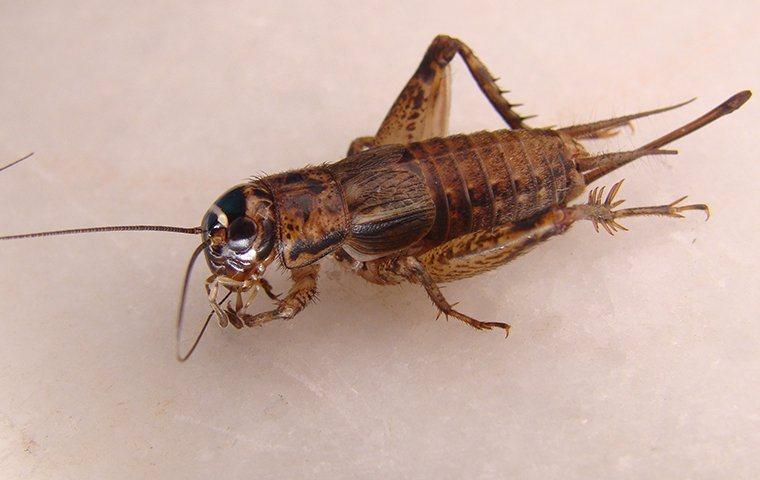Even if you’ve never seen them, chances are you’ve probably heard them before. Those loud, high-pitched cricket sounds keep you from having a restful night’s sleep. And if the incessant chirping isn’t enough to annoy you, a cricket’s ability to cause widespread destruction in your home surely will.
Your reliable pest control in St. Charles is working hard to ensure you don’t have to withstand the chaos crickets cause. At Pest Control Consultants, we pride ourselves on providing the best pest management solutions to completely get rid of crickets in your house. Read on to discover more about these peculiar insects, their unusual habits, and the steps you can take to eliminate them from your property successfully.

What Do Crickets Look Like?
Despite roughly 19 different types of crickets, the camel cricket is the most common species that invade households in Illinois. Often referred to as “spider crickets,” these particular insects are easily identifiable by their humpbacked exterior. Oddly enough, camel crickets are wingless and do not chirp; however, they are incredible jumpers with enormous hind legs. Their head is positioned downward and tucked behind their long legs—contact a local pest management company near you for assistance with controlling crickets in St. Charles.
Is It Dangerous To Have Crickets In My House?
Fortunately, crickets in St. Charles are not known for being dangerous or harmful to people. Instead, they’re highly vocal nuisance insects that keep you up at night with their unbearable chirping noises. However, if they invade your home, they can cause massive damage to your furniture and clothing items as they feed on a wide variety of fabrics. Therefore, if you want to keep crickets out of your house, follow these five tips:
- Limit your outdoor lighting, or switch to yellow bulbs.
- Keep the weeds, and tall grass cut low near your home’s foundation.
- Eliminate insect hiding places by clearing the clutter, like boxes and paper.
- Dry out any areas with moisture, especially in basements and crawl spaces.
- Seal gaps and cracks that you find throughout your house.
You can also find these insects living under logs and rocks. Your local pest control is a valuable resource to help manage the population of all types of crickets that you discover in or around your home.
What Attracts Crickets Into The House?
Take a look around your home and see if any of the items you own consist of the following materials:
- Leather
- Wool
- Cotton
- Silk
- Linen
- Fur
These fabrics are not appealing to you, but crickets find them alluring, especially if items come complete with sweat and food stains. As bizarre as it sounds, crickets prefer to dine on these materials so that you may notice an unraveled appearance. But don’t think their appetite stops at cloth-like materials. Crickets enjoy feasting on your fruits and veggies, too. Not even your pet’s food is off-limits.
How Do I Get Rid Of Crickets In My House?
You’ve heard of them before and perhaps, even tried them yourself. Yes, those do-it-yourself (DIY) and home remedies have everyone running to their fridges and medicine cabinets to find fixes for a wide array of household issues. But trying to resolve an issue as serious as an insect infestation using DIY methods will only cause more harm than good.
At Pest Control Consultants, we understand that home remedies can aid in solving simple household mishaps. But when nuisance pests overrun your home, that’s a situation that requires more muscle to remedy successfully. And unfortunately, DIY and home remedies won’t provide satisfactory results.
However, our professionals are well-equipped to eradicate crickets in your house quickly. For over 20 years, we’ve been providing exceptional service to residents in St. Charles and the surrounding areas. Contact Pest Control Consultants today to request your free inspection.
 Customer Reviews
Customer Reviews
